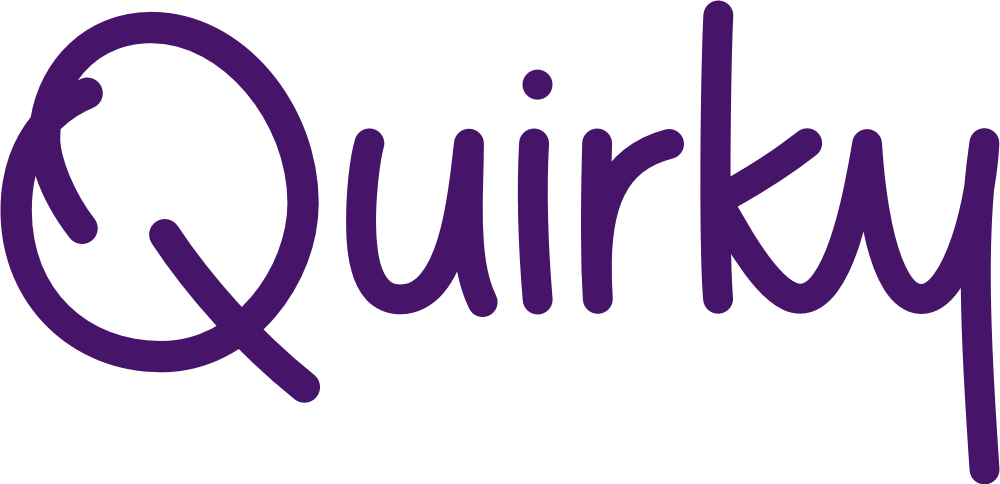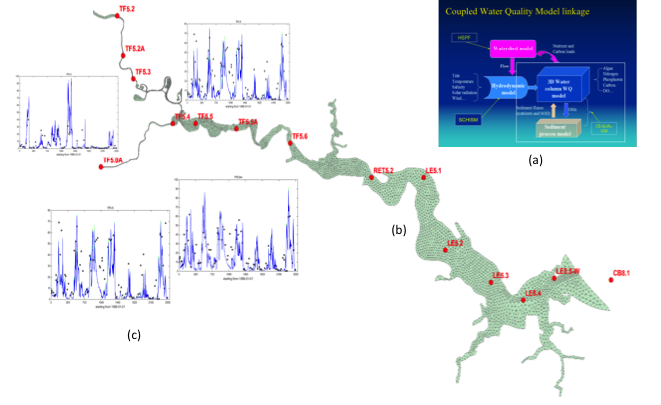Chesapeake Community Modeling Program
CCMP Newsletter | March 2015
Volume 8, Issue 1
Introduction
Welcome to the First CCMP Newsletter of 2015!
As always, please contact Dave Jasinski if you have any questions or comments.

Contents
1. CCMP News in brief
2. Open Source on the March
3. Featured Model: VIMS HEM3d with SCHISM inside
4. Featured Modeler: Harry Wang
5. Upcoming Meetings
6. Correction
1. CCMP News in Brief
Bill Ball Takes the Helm at CRC
 |
| CRC's new Executive Director, Bill Ball |
CCMP Steering Committee member Bill Ball has been hired to replace outgoing Chesapeake Research Consortium Executive Director Kevin Sellner. Bill has a deep commitment to science and management of Chesapeake Bay and has published extensively in the field of water quality. Bill will remain a JHU faculty member with 25% of his time for teaching and administering several on-going grants associated with his regional interests as well as other research and service related to water, sanitation, and health for under-resourced communities. As in Kevin’s appointment, Bill’s affiliation ensures an on-going connection to the academic community while working to link research and education to management issues, to facilitate inter- and multi-university projects among research institutions involved with Chesapeake Bay science, and to assist the Chesapeake Bay Partnership and Program Office in their efforts to convene groups of scientists to address different research issues and challenges to Bay health and restoration. Bill is excited by the opportunity this position brings toward engaging with a much broader group of scientists at multiple institutions throughout the Bay region. He intends to spend much of his first year travelling to meet investigators at the various Bay institutions and he looks forward to personally meeting as many colleagues as possible.
Bill will be assuming his primary responsibilities on July 1st, 2015, and, despite Kevin’s “official” retirement on December 31st, 2014, arrangements have been made for Bill and Kevin to work together to represent the CRC and the research communities through the spring, with Bill not assuming his full responsibilities until July.
2. Open Source on the March
Facebook Donates AI tools
![]() Facebook announced last month that it is donating several computer applications to the open source software project Torch. These applications are pattern recognition programs that were developed to find patterns and common elements in large data sets.
Facebook announced last month that it is donating several computer applications to the open source software project Torch. These applications are pattern recognition programs that were developed to find patterns and common elements in large data sets.
The Torch project is focused on machine learning and developing ways for computers to “think” and “learn” in a similar fashion to the human brain. Torch is also being used to teach computers how to process visual information and “see”. You can check out the Torch Project site here http://torch.ch.
The Open Source Innovation Model Applied to Inventions
 Ben Kaufman came up with the idea for Quirky when he was the owner of Apple accessory manufacturer Mophie in 2007. At that year’s MacWorld expo in San Francisco, he handed out pens and paper and asked attendees to submit ideas for Mophie’s 2007 product line. He was so impressed with the quality of the ideas from what was essentially “crowd-sourced” input that he founded Quirky in 2010. The goal of Quirky is to take the ideas that people submit to them and handle all aspects of product development – from refining the design, to patent application, to manufacturing, to marketing and sales.
Ben Kaufman came up with the idea for Quirky when he was the owner of Apple accessory manufacturer Mophie in 2007. At that year’s MacWorld expo in San Francisco, he handed out pens and paper and asked attendees to submit ideas for Mophie’s 2007 product line. He was so impressed with the quality of the ideas from what was essentially “crowd-sourced” input that he founded Quirky in 2010. The goal of Quirky is to take the ideas that people submit to them and handle all aspects of product development – from refining the design, to patent application, to manufacturing, to marketing and sales.
Obviously, not all the ideas that Quirky receives are winners. That’s where the power of the open source innovation model that has been so successful in software development comes into play. Ideas are first submitted to the Quirky website. Then, the online community offers their opinions on the ideas as well as suggestions for improvements. Quirky’s team of screeners then looks through the list of popular submissions and determines which, based on market research, is most likely to be successful. Every Thursday, the hottest prospects (usually less than 10), are profiled at an event at Quirky’s Manhattan headquarters. The event is live streamed so others from the community can participate. At the event, participants offer feedback on each product. Based on this feedback, fewer than half of the ideas profiled get the go-ahead for further development. In the end, about 20% of these make it to the marketplace.
Once a product makes it to market, Quirky will take 90% of sales. The person who originated the idea will get 4% with the rest going to members of the community who provided input on product refinement. Quirky is essentially helping to get ideas off the cocktail napkin and into development. There is a high failure rate in the consumer product marketplace and Quirky is shouldering that risk.
3. Featured Model: VIMS HEM3D with SCHISM inside
Researchers at the Virginia Institute of Marine Science have recently completed a second generation of their HEM3D/EFDC model (Park, et al, 1995). This version is coupled with SCHISM (Semi-implicit, Cross-scale Hydroscience Integrated System Model) as an upgrade. It uses a mixed structured and unstructured grid, cross-scale, finite element 3D model (Zhang et al. 2015; Wang et al., 2014). The “VIMS HEM3D with SCHISM inside” is designed to effectively simulate 3D baroclinic circulation across lake-river-shelf-ocean scales with a high degree of resolution. It has the added benefit of being an open-source community-supported modelling system. It uses a highly efficient semi-implicit finite-element Eulerian-Lagrangian algorithm to solve the Navier-Stokes equations in order to address a wide range of physical and biological processes. The numerical algorithm is high-order, stable, and computationally efficient. It is mass conservative and also naturally incorporates wetting and drying of tidal flats. Some of the important features of the “HEM3D with SCHISM inside” include:
- Finite element/volume formulation
- Hydrostatic & non-hydrostatic options
- Unstructured grid in the horizontal dimension
- Hybrid SZ coordinates or new LSC2 in the vertical dimension
- Semi-implicit time stepping (no mode splitting): no CFL stability constraints → numerical efficiency
- Robust matrix solver
- Higher-order Eulerian-Lagrangian treatment of advection
- Natural treatment of wetting and drying suitable for inundation studies
- Three transport algorithms: Eulerian-Lagrangian, upwind, or TVD
- Good volume conservation
- Mass conservative transport
Examples of model output are shown in the images below. The first example shows the high resolution structure and unstructured grids in figure 1(b) imbedded in the Chesapeake Bay-wide model domain in figure 1 (a). Figure 1(b) is the Navy Pier-resolving grid near the Norfolk Harbor and figure 1(c) is the model simulation velocities and water level during ebb tide using a 180 second model time step.
 |
| Figure 1 (a) Chesapeake Bay and the adjacent continental shelf grid (b) Imbedded Navy pier-resolving mixed structured and unstructured grid near Norfolk Harbor (3) model simulated velocities and water level. |
The second example, shown in Figure 2, is for a water quality simulation in the Upper James River. Figure 2(a) is the water quality model kinetics and the linkage to HSPF, SCHISM, and the sediment flux model. Figure 2(b) is the James River model domain with EPA monitoring stations and Figure 2(c) shows the inter-comparison between modeled and observed chlorophyll-a simulation from 1999-2005 in the Upper James River. Further details about the open source community SCHISM model can be found in http://www.schism.wiki/?title=Main_Page.
 |
| Figure 2: (a) A diagram of water quality model linkages(b) James River model domain with EPA monitoring stations (c) comparison between model and observed chlorophyll-a in the Upper James from 1999-2005. |
4. Featured Modeler: Harry Wang

Professor of Marine Science Virginia Institute of Marine Science P.O. Box 1346 1375 Great Road Gloucester Point, Virginia 23062-1346
Education B.S. - Atmospheric Sciences, National Taiwan University, 1975 Ph.D. - Geophysical Fluid Dynamics, The Johns Hopkins University, 1983 Post-doctoral - The Chesapeake Bay Institute of the Johns Hopkins University, 1983-1985
Harry Wang’s main research interests revolve around using numerical simulation models to better understand coastal and estuarine physical processes and the consequence of their transport properties; in particular, the transports driven by wind, waves, tides and density, and that are affected by the Coriolis force and turbulent mixing.
Before coming to VIMS, Harry worked on some of the early development of the Chesapeake Bay hydrodynamic model CH3D (Curvilinear Hydrodynamcis in 3 Dimensions) with the Army Corps of Engineers, Waterways Experiment Station, which, in its modern high-resolution implementation, is now being used in the development of TMDLs for Chesapeake Bay.
Since moving to VIMS Harry has worked on a wide variety of modeling-oriented problems in many different coastal and estuarine environments. His current work emphasizes the use of numerical computational methods to synthesize the physical, chemical and biological processes that affect environmental conditions such as currents, salinity, temperature, water quality, phytoplankton dynamics, sediment and larval transport. Some of Harry’s more recent projects include: efforts to simulate water quality in the Baltimore Harbor, Back River and the Upper Chesapeake Bay; watershed and water quality modeling in the upper Western Shore of Maryland; and TMDL development in the MAryland and Virginia Coastal Bays.
In addition to these efforts, Harry has been working on combining Lidar elevation data, bathymetric data, and information on urban infrastructure in a sub-grid model for predicting inundation in New York City during Hurricane Sandy. And he has been working with Joseph Zhang on the development of the SCHISM model, which is discussed in our Featured Model segment of this issue.
Harry is currently a full professor of Marine Science at the Virginia Institute of Marine science. His overarching ambition is to make use of computer models as primary tools to facilitate interdisciplinary research.
5. Upcoming Meetings
 CSDMS 2015 Annual Meeting: Models meet data, data meet models
CSDMS 2015 Annual Meeting: Models meet data, data meet models
Boulder, Colorado - May 26-28, 2015 link
6. Correction
In the October 2014 edition of the CCMP Newsletter we incorrectly stated in the Featured Modeler section that Richard Tien had coupled the RCA model to the FVCOM model. In fact, this work was done by Changshen Chen and Jianhau Qi. We apologize for the error and any confusion this may have caused.
Chesapeake Community Model Program
http://ches.communitymodeling.org/
Chesapeake Research Consortium
Edgewater, MD
410-798-1283